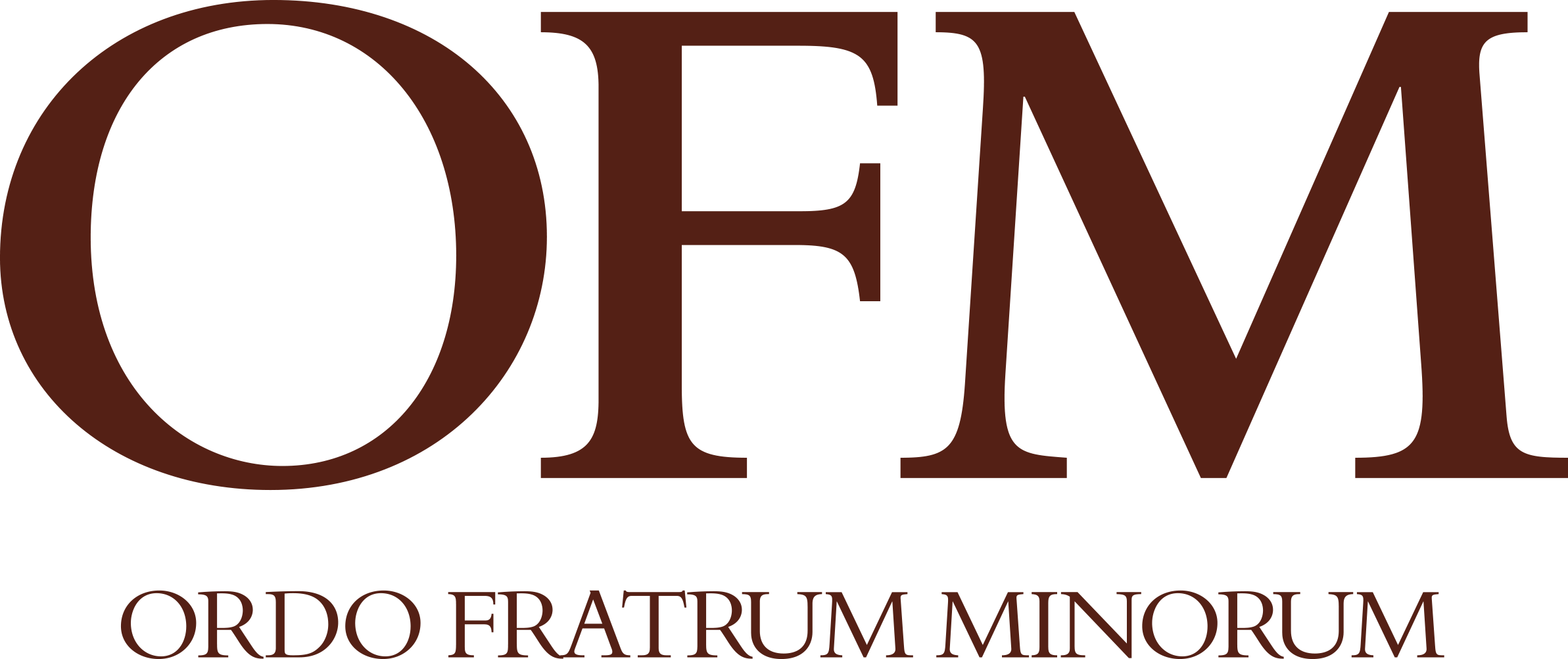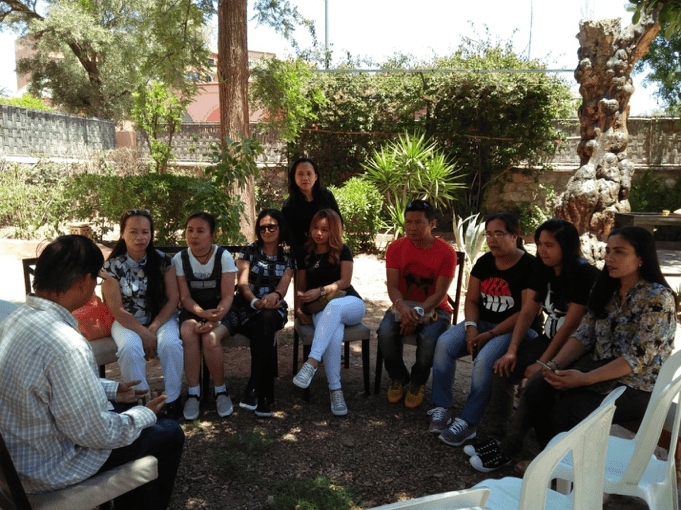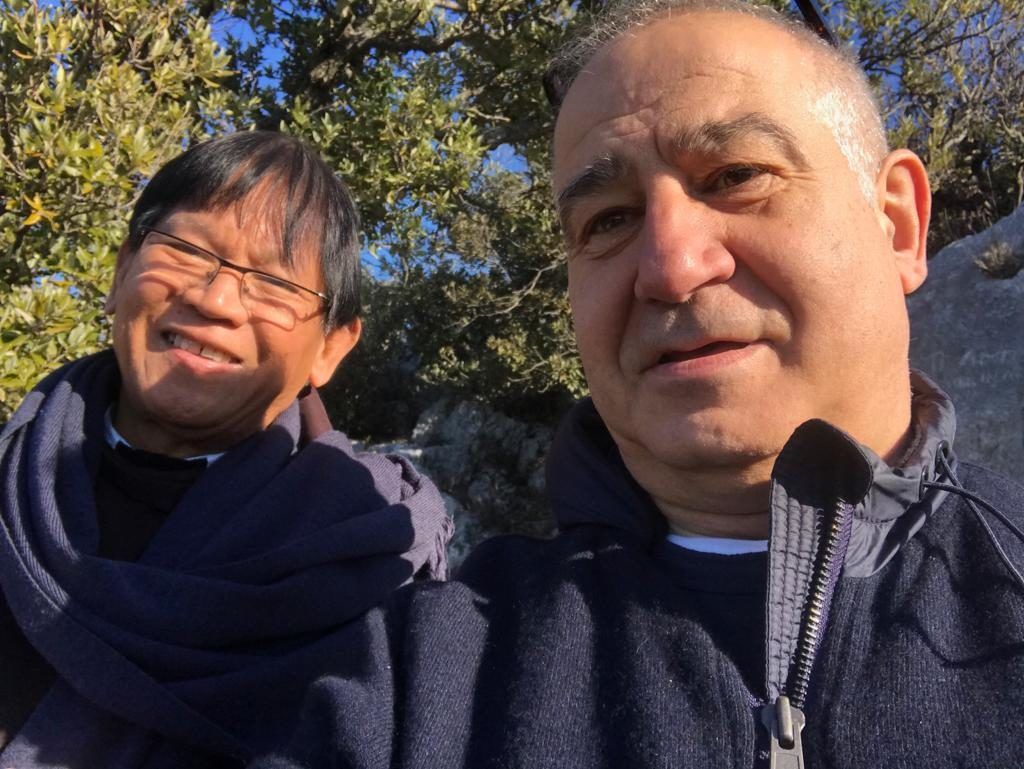My opportunity to meet people who are experts in the fields of biology, biotechnology, mycology, law, science & engineering of soil was made possible with the help of some brothers that are working in the General Curia. I was lucky to get introduced to a couple of Franciscan Sisters of the Eucharist who live in Assisi, Sr. Mary Frances Traynor, soil scientist and former Professor at the University of Perugia and Sr. Agnese Hutchison, biologist and English Professor, who have been working as missionaries in Assisi and Perugia, Italy for more than thirty-five years.
On March 1, 2019, I met Sr. Mary Frances and Sr. Agnese, who invited me to a dinner with their friends and colleagues to discuss about integral ecology and plan an experiential tour for me. They were Prof. Roberto Venanzoni (Professor in the Department of Chemistry, Biology, and Biotechnology, President of the Interdisciplinary Council in Biological and Natural Sciences-University of Perugia), Prof. Paola Angelini (Associate Professor of the Department of Chemistry, Biology, Biotechnology, and an expert in Mycology from the University of Perugia), Dr. Gabriela Parodi (an environmentalist and lawyer working as Quality Manager of AngelantoniIndustry, Massa Martana), and Br. Gianluca Zucaro, OFM (Chiesa Nuovafraternity in Assisi). Br. Gianluca worked as a scientist/engineer in Turin, Italy and New Mexico, USA before entering the Order of Friars Minor
It was a great privilege and blessing to be with Sr. Mary and Sr. Agnese and their colleagues. Special thanks to them for arranging my two-day-ecological-trip with Prof. Roberto Venanzoni. I visited the Eremo delle Carceri, a Franciscan hermitage near Assisi where St. Francis and his companions retired for prayers, Bosco Sacro di Monteluco (Sacred Forest of Monteluco), where a Franciscan convent is located, and Cascata delle Marmore, the Environmental Education Center (MarmoreFalls) with different levels of beautiful falls, located near Terni.
The first day of the ecological trip with Prof. Roberto Venanzoni started from Carceri of Mt. Subasio. He explained that there had been many reforestations made in different periods in which some new species of trees were introduced on the mountain. There are three zones in this area, the first zone has olive trees scattered in between the forests of oaks. The second zone is the oak forest, and the third area consists of conifers (pines, fir, and cedar) and mountain pastures where there are grass species and herbs. He also explained the different kinds of rock formation at Carceri. I could see the movements and formations of different rocks, and erosive action of water. He pointed out some plant species like the ferns and mosses that contributes to the ecosystem. In terms of interventions, he noted the importance of considering the aesthetic of the area, e.g. putting a parking lot in an area that will not affect the surrounding nature. There were some signs of interventions being made by Franciscans like preventing the soil from eroding and the preservation of the place conducive to prayers, encounter with nature, and pilgrimages.
On the second day of the trip, we visited the Sacred Forest of Monteluco near Spoleto. Prof. Roberto and I came across a lot of hikers and bikers heading up to the mountain. He showed me the Sacred Forest of Monteluco of the evergreen holm oak trees. We arrived at a Franciscan convent dated 1218 and found the habit of St. Bernard of Siena, many caves and hermitages where friars used to pray, e.g. the cave of St. Anthony of Padua, which is located in a high area overlooking Spoleto. The Sacred Forest, like Carceri of Mt. Subasio, had a beautiful landscape of rocks covered by woods, plants and shrubs. After visiting Monteluco, we proceeded to the Marmore Falls and the Environmental Center nearby Terni. The center offered a guided tour along the side of the falls which was of three layers and gave us some information about different animals and plants around the area.
In conclusion to this wonderful experience of friendship and dialogue, I must say, first of all, that I have witnessed what Laudato si’tells us about our faith and science, i.e. we should also relate our faith with science. Secondly, Carceri and Sacro Bosco are a part of our rich Franciscan heritages. St. Francis and his followers were very much in communion with nature and made it home of encounter with God. For us Franciscans, we can develop here a project of Franciscan ecological spirituality and ministry. We can utilize the sacred sites in nature for our formation in Franciscan ecological spirituality and for visitors and pilgrims as well. With the various species of plants, trees, shrubs, and herbs, rock formations, landscapes, and the whole ecosystem, it will be a venue for scientific studies and its integration with our faith, awe, and spiritual aesthetics.
Ecological Spirituality and Ministry
The first formation of the Ecological Spirituality and Ministry (ESM) group was held in the garden of the Church of the Holy Martyrs in Marrakech, Morocco with nine overseas Filipino workers. The session started with the “Canticle of Creatures” and was led by Br. Melito Pinili, OFM who is a missionary assigned to the church of the Nuestra Señora del Pilarin Larache, Morocco
At first, the participants shared their expectations of the formation. Their objectives were: to learn more about ecology, spirituality and ministry, to take care of creation and environment, to learn how to pray in contemplation of the goodness and beauty of God and His creatures. The hope is that after working in Morocco, they will return to the Philippines to be of service in healing Mother Earth that has been severely affected by industrial exploitations and pollutions.
Having listened to their expectations, Br. Melito led them into a discussion on the definition of ecology and spirituality (Catholic spirituality). Then, he gave a reflection about a Franciscan sanctuary in Gubbio, Italy which is known as the site of Francis’ taming of the fierce wolf that was terrorizing the villagers. They read the story from the passage in the Little Flowers of St. Francis. The last part of the session was about a topic of “Ecological Consciousness-Interconnectedness and contemplating God’s creatures.” At the end, they prayed “Lord make me an instrument of your peace,” and the Canticle of the Three Young Men (Daniel 3, 57-88).
The participants agreed to create a SNS group called “Ecological Spirituality and Ministry – Marrakech.” They planned to continue the formation meetings on the first Sundays with topics of water, energy, transportation, food, waste disposal, teaching of the Bible on ecology, St. Francis and ecology, Franciscan ecological spirituality and the Encyclical “Laudato si’”
The vision of the group is to establish Ecological Spirituality and Ministryin different parishes in Morocco by the year 2020, where there are Filipinos and other foreign Christians who would like to discover the beauty and the goodness of God through contemplation and service of care for our common home – Mother Earth.
Br. Melito Pinili, OFM
JPIC Commission |Custody of the Protomartyrs of the Order
Morocco






